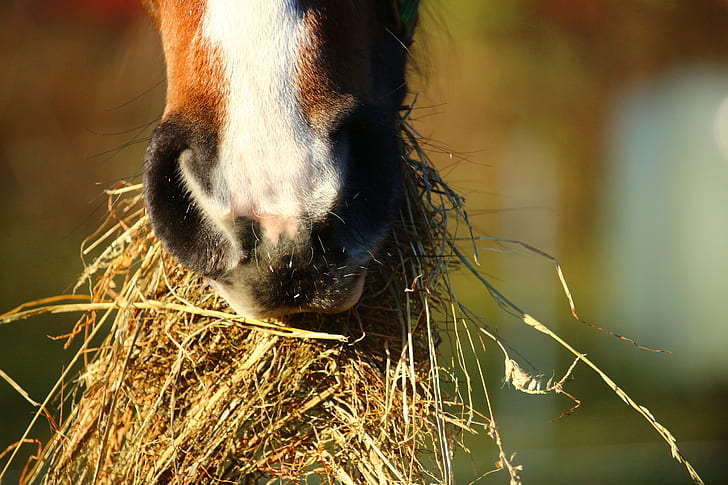Should You Be Worried About Blister Beetles in Hay?
September 3, 2025

Did you know that a small bug, just 4 to 6 grams in size, can be potentially deadly to your ~1000-pound horse? (1).
This insect, known as the Blister Beetle, is typically found in alfalfa hay and contains a toxin called Cantharidin.
How do blister beetles affect horses?
Like the name implies, the blister beetle and its associated toxin cause damage through the formation of blisters and ulcers in and around the mouth, stomach, and intestines upon contact. When ingested and absorbed, Cantharidin can cause further damage; symptoms vary widely and include everything from colic to frequent urination (2).
While the blister beetle can be toxic to ruminants such as cattle, sheep and goats, it is more of a concern in horses due to the simple equine stomach. Ruminants may be able to detoxify this potentially harmful substance in the rumen, but in horses, Cantharidin will travel straight through the stomach and into the small intestine where it will be absorbed, and then it becomes lethal.
If you believe your horse may have ingested blister beetles or Cantharidin, contact your veterinarian immediately.
There is no antidote available for Cantharidin, but it is possible to try to limit the absorption of the toxin if it has been consumed. Products such as activated charcoal or bentonite clay for horses can be provided to adsorb toxins from the gastrointestinal tract and remove them from the body to prevent absorption into the bloodstream (2). Additionally, your vet may provide IV fluids to help combat dehydration.
How do you prevent blister beetles in hay?
Because there is no antidote, prevention is essential in avoiding blister beetle poisoning. One obvious way to avoid possible blister beetle toxicity in your horses is to not feed alfalfa.
However, this type of hay can be a great addition to a feeding program, so don’t rule it out immediately.
If you do choose to feed alfalfa it is important to know the risks and how to prevent the potential contamination of hay with blister beetles.
Can you see blister beetles in hay?
Before feeding alfalfa hay, be sure to inspect it. It is possible to see these small, long black bugs in the hay, however due to size it will take careful investigation of the hay prior to feeding.
An additional consideration for visual inspection is that blister beetles exist in a wide variety throughout the country. The appearance of blister beetles may vary from region to region, so be sure to find out what the bugs will look like specific to where you live.
If you do find blister beetles in your horse’s hay, DO NOT feed the alfalfa, whether they are alive or dead, as Cantharidin can remain toxic for months after the beetle has died (3).
Other ways to limit the chances of having blister beetles present in your alfalfa are (4):
- Buy from the first cutting of the season, as blister beetles are not active yet;
- Buy with less than 10-20% bloom, as blister beetles feed off the flowers and leaves of alfalfa and are less likely to be present if there are fewer of these;
- Do not feed alfalfa baled with a crimper, as this may trap blister beetles in the hay; and
- Be aware of where your alfalfa comes from and try to develop a relationship with your hay producer.
Key Takeaways
Alfalfa hay can be a great addition to a feeding program. However, caution must be exercised when feeding alfalfa in order to avoid Cantharidin toxicity from blister beetles that may be found in the hay.
If a horse does ingest blister beetles, contact your veterinarian. Bentonite clay may be utilized to help remove the toxin from the equine digestive tract and prevent absorption of the toxin into the bloodstream.
Read More:
- https://aaep.org/horsehealth/blister-beetle-poisoning
- https://www.vet.k-state.edu/vhc/services/equine/timely-topics/blisterbeetleFeb16.html
- https://asas.org/taking-stock/blog-post/taking-stock/2012/08/10/how-to-protect-horses-from-toxic-blister-beetles
- https://thehorse.com/112252/check-horses-alfalfa-hay-for-blister-beetles/
